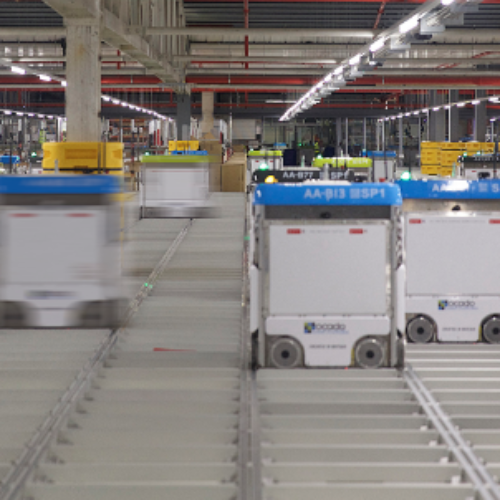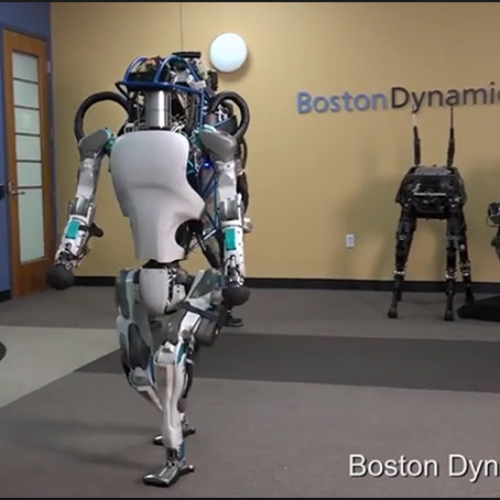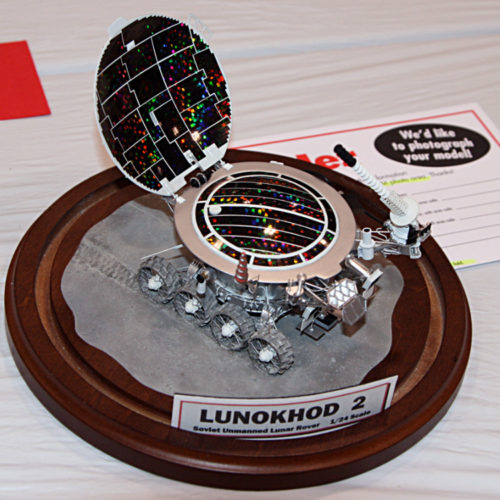Mini Cheetah From MIT
Mini Cheetah from MIT is the first four-legged robot that can do backflips. We all know the Atlas from Boston Dynamics is capable of them, but he only has two legs to contend with. Not only can Mini Cheetah do backflips, but it can also run, scoot sideways, hop, and play in a pile of dry leaves, just like a puppy would.
Don’t Kick Mini Cheetah From MIT Around
The endearing little robot weighs just 20 pounds, but that does not mean it cannot pick itself up. In Fact, even if you kick totally over onto its back, it can still recover and stand up again.
The design of Mini Cheetah from MIT is similar to that of Spotmini, the doglike robot from Boston Dynamics. It is possibly more athletic though, just as you would expect a cat to be. It can run fast too at about twice the speed of a human, and you need to remember that if you ever challenge it to a race.
Developed by the Biomimetic Robotics Lab at MIT, they say they have made Mini Cheetah with commercial, off-the-shelf parts which have kept the costs to a minimum, and allows for speedy manufacturing. They are hoping that its low cost and ease of replication will enable researchers worldwide to share hardware implementation and control implementations.
The Launch Of Mini Cheetah From MIT
Mini Cheetah was first shown at the start of a three-day event at MIT to celebrate the school,’s new Schwarzman College of Computing. This is a $1 billion project to integrate computer science into every university department from genetics to political sciences and including robotics.
The robot sat crouched in the lobby of the Sta Center at MIT, appearing a bit as a cat-like predator would. At the command of the person handling it, Mini Cheetah sprang into the air, did a perfect somersault and landed on its feet without wavering at all. The event also saw new software for various different areas including measuring fetal health and online shopping.
Its big brother, Cheetah, in the meantime, has advanced to being able to climb stairs, even when they are littered with obstacles such as pieces of wood and other debris. The amazing thing is that it does this without any sensors, which would be a bit like you trying to do it with your eyes closed. This was done purposely as the developers believe that robots should not always rely on vision. Instead, it navigates with contact detection and mode-predictive control. These help it to find its way and to recover its balance if it slips.
These abilities, together with the fact it can run at 14 mph, are all part of making it the perfect robot for search and rescue missions, where humans cannot go.
You might also like
The Robot Arsonist That Cost Ocado $137 Million!
Last year huge British online grocer Ocado, partnered with the acclaimed robotics firm Kroger in an attempt to get ahead in the ongoing race between large companies to acquire the
Atlas The Robot Is Becoming Even More Human
Atlas, developed by Boston Dynamics with funding from the United States Defense Advanced Research Project (DARPA), is a 1.8 meter (6 foot) humanoid. It is intended that Atlas will eventually
Lunokhod 2
Lunkhod 2 was the second of two unmanned lunar rovers landed on the Moon by the Soviet Union as part of the Lunokhod program. A 1970s Soviet rover did indeed



